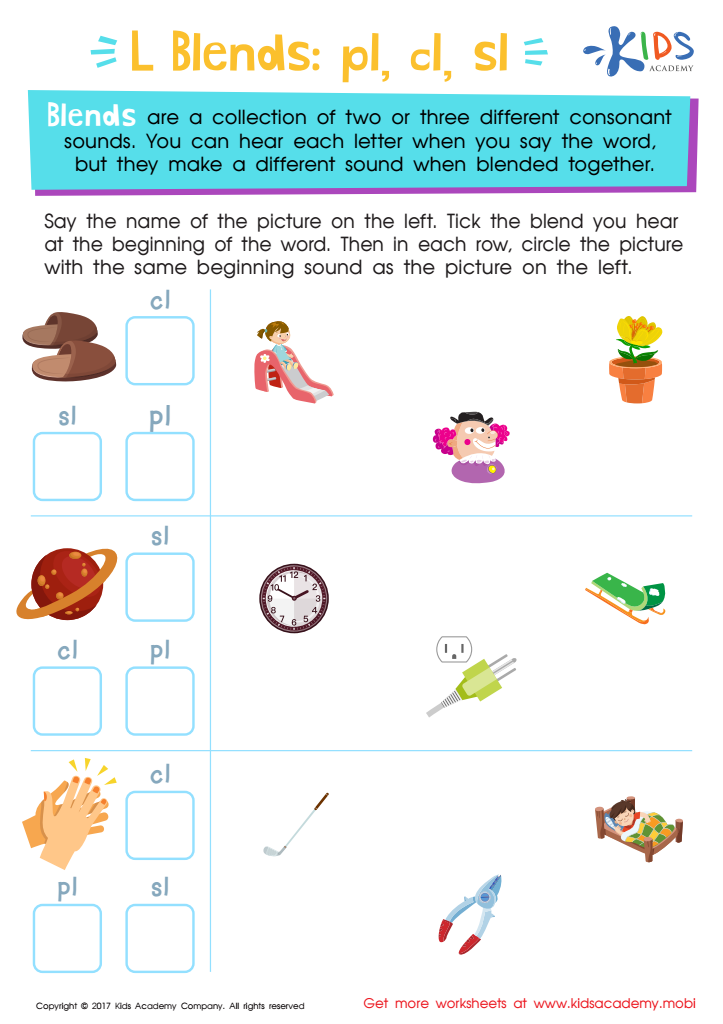Phonics Skills Normal Two Letter Phonics Worksheets for Ages 3-6
4 filtered results
-
From - To
Discover our "Normal Two Letter Phonics Worksheets" designed for children ages 3-6, perfect for enhancing early literacy skills! These engaging and fun worksheets focus on phonics, helping young learners recognize and sound out two-letter combinations. Each activity promotes letter recognition, phonemic awareness, and proper pronunciation, making learning seamless and enjoyable. Tailored to meet the developmental needs of preschool and kindergarten students, our worksheets also foster creativity through colorful illustrations that catch young eyes. Encourage your child's reading journey today with these effective phonics resources—providing the foundation they need for future reading success! Download your worksheets now for endless fun and learning!


Blending Consonants: "Fl", "Bl" and "Gl" Printable


L Blends: "Pl", "Cl" and "Sl" Printable


Missing Digraph: Part 2 Worksheet


Consonant Blends: "Dr" and "Tr" Printable
Phonics skills, particularly the recognition and understanding of two-letter phonics, are essential for children ages 3-6 as they lay the foundation for reading and writing. During these formative years, children begin to explore language through auditory and visual means. Normal two-letter phonics, including vowel-consonant and consonant-vowel pairs, serve as building blocks for larger words, promoting phonemic awareness and decoding skills.
Understanding phonics helps children to make connections between sounds and letters, which is crucial for developing reading fluency. Preschool and early primary students who master these skills find it easier to sound out words independently, fostering confidence and motivation. Additionally, phonics education aids in vocabulary development and comprehension, enabling young learners to engage with stories and texts more meaningfully.
For parents and teachers, prioritizing phonics skills cultivates a love for reading, encourages language development, and equips children with necessary tools for academic success. By integrating phonics activities into everyday learning, caregivers and educators can create a supportive and enriched environment that prepares children for future literacy challenges. This investment in early phonics education ultimately leads to better academic outcomes and lifelong learning habits.
 Assign to My Students
Assign to My Students








